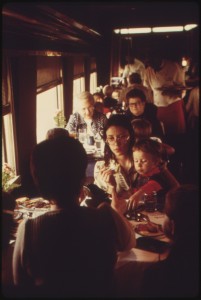At the rate we are going, all of us will have to suffer the fate of seeing our names–the forenames our parents so thoughtfully contemplated–appropriated to identify some crummy storm that has found its way to Wichita.
A tendency to see everything as a crisis is a prime symptom of what mental health professionals sometimes diagnose as a “borderline personality.” Obsessions over supposed disasters consume persons with this tendency, which converts relatively minor concerns into major personal crises.
In television news—especially its forms on the major 24/7 cable outlets—we see the same pattern: too much of an obsession with one concern at the cost of a more varied news agenda. Anyone looking at this journalism these days will notice recurring patterns of repetition, overstatement and willful simplification that make it distinctly different from the nuanced exchanges most Americans have every day. Sometimes this overcoverage is just silly, as with the compulsive over-coverage of deflated footballs in the NFL, or there is endless piling-on about a minor story such as Brian Williams inflated claims of danger after reporting from Iraq.
For sure, the chance to roll out the“Breaking News” slide pumps a network’s ratings. CNN President Jeff Zucker seems to have believed that full and continuous days of coverage of the Malaysian Airliner that disappeared over the Southern Ocean a year ago was justified, even though there was precious little hard news to report. It was the same kind of endless hyping that characterized the network’s laughable coverage of what was a relatively minor January snowstorm in New York. This overreach left an anchor driving down Broadway in a “Blizzard Mobile” in search of a stray car—any car—that might be stuck in the three inches of snow that fell. The halcyon days of network news are clearly in our past.
This kind of fabulism is also the operating principle in the seemingly more science-driven precincts of weather reporting. Inexplicably, The Weather Channel has taken to naming every snow or rain storm that crosses a populated area as if it were a weather disaster. We no longer need a Hurricane to declare a weather emergency. At the rate we are going, all of us will have to suffer the fate of hearing our names–the forenames our parents thoughtfully contemplated–appropriated to identify some crummy storm that has found its way to Wichita.
To be sure, the nation’s Hearst and Pulitzer newspapers did much the same thing in the heyday of yellow journalism during the later part of the 19th Century. Drumming up passion against the Spanish in Cuba and the Philippines became a way of life. It’s basically the same hunger for narratives of villains and victims that still serves as the primary formula for most versions of local television news, which feature the very worst that has happened in the last 24 hours. Within metropolitan areas of 4 or 5 million, that means there’s usually some awful mayhem to breathlessly report.
The price of all this media fabulism is that it forces the nation’s attention to news that most viewers cannot use. Riveting images of criminality give viewers little to act on, other than a vague sense that their communities are not safe enough. With uninflated footballs to endlessly mull, who has time for the nation’s systemic challenges–underfunded schools, crumbling highways, aging mass transit, broken city budgets–with admittedly less interesting “B” roll footage, but more important consequences? Read some of the good newspapers that are left in the United States—the New York Times, Wall Street Journal, the Washington Post and others—and its easy to still discover what we are missing with single-focus coverage. As the Progressive journalist Bill Moyers asked last December, where are the stories on CIA kidnappings and other governmental “black ops,” the widening gap between rich and poor, or impediments to voting that have been approved in many states? Some of our better media cover these stories some of the time. But cable television producers generally shy away from events that do not also have dramatic images.
Dramatic images of bedlam and bloodshed encourage individuals to view their world as more threatening than it is. Older Americans are especially prone to attitudes of chronic pessimism created by cable news coverage that makes nearly every story appear to confirm their worst fears: governments that don’t work, violent crime that is out of control, schools failing to serve their students, epidemic levels of pregnancy and alcohol use among teens. In fact, even against these perceptions the trend lines generally allow for more optimism rather than less. For example, most American cities are far safer now than they’ve been in the last 40 years. Most states, including my own, have many superb schools. And drinking and pregnancy rates for teens are falling dramatically.
The recommendation researchers make to those who care for the aged is usually always the same: don’t let television news become a dominant activity in a senior’s life. But the same recommendation should hold for the rest of us as well. We all need to resist the tendency to get sucked into the gore that is justified by a news organization’s desire to troll for ratings on the pretext that its the next big story.
Comments: Woodward@tcnj.edu
“Breaking news” image courtesy of Wikipedia.org
